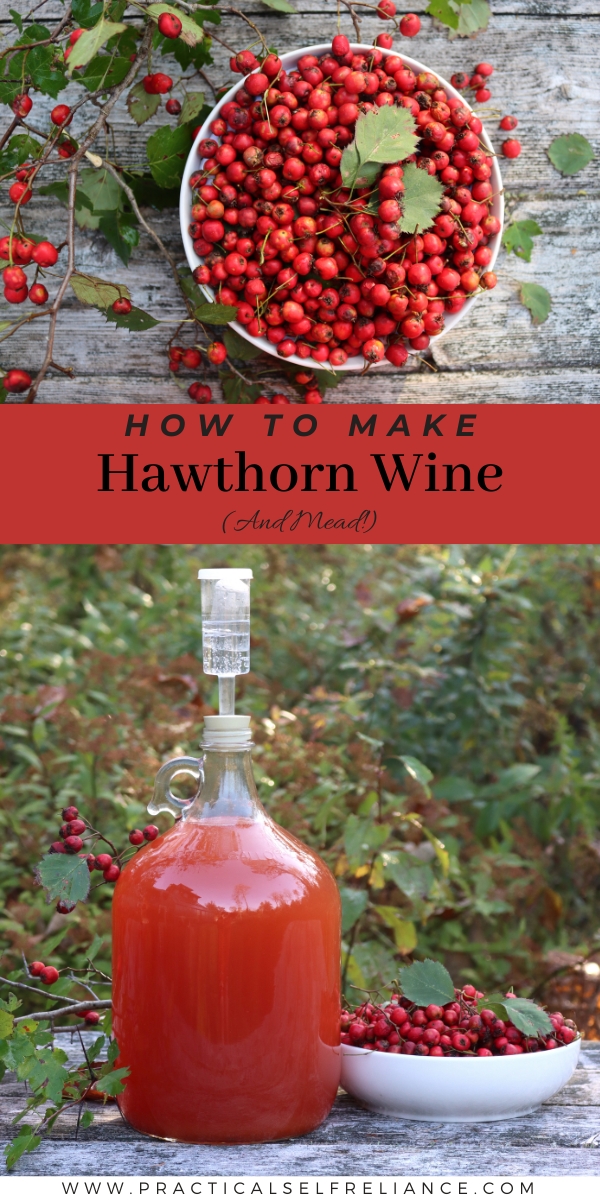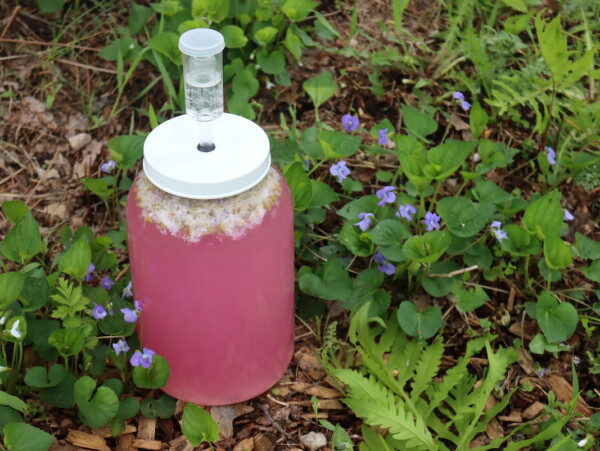Affiliate disclosure: This post may contain affiliate links. Please see our Privacy Policy.
Hawthorn wine is a delectable drink perfect for sipping on warm summer evenings. Made from the berries of the hawthorn tree, this wine harbors a pleasing pink to red hue and ages well.
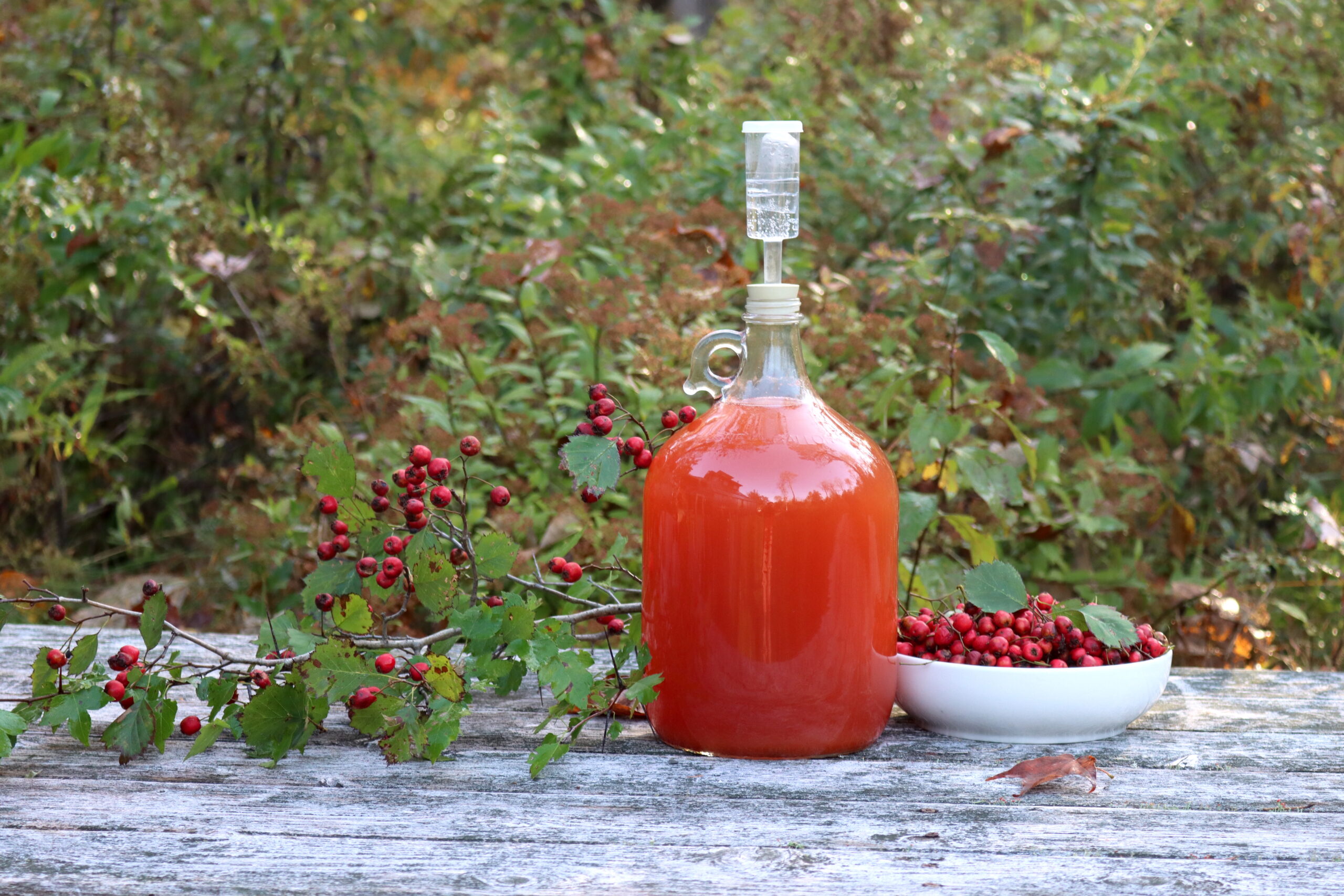
To make hawthorn wine, you’ll need to collect a good deal of haws (hawthorn berries) that grow on the small trees or shrubs of the hawthorn tree.
The hawthorn tree (Crataegus) goes by many names including thornapple, May-tree, quickthorn, Mayflower and hawberry. Actually related to the Rosaceae or Rose family, the hawthorn is easily recognizable by its white, fragrant five-petaled blossoms and thorny branches.
Found in temperate climates along the Northern Hemisphere, you’ll discover various cultivars of the Hawthorn tree throughout North America and Europe. They are tolerant to many soil types as long as they’re well-draining with many varieties tailored to different climates.
Hawthorn trees are grown for ornamental uses by some, but many more do so for their lovely flowers and berries. The flowers of the hawthorn tree are often used for teas and tinctures, and the berries are wonderful for syrups, jellies, cordials, liqueurs, and, of course, wine.
The hawthorn tree grows well in sunny locations, with sunnier spots promoting lots of blossoms.
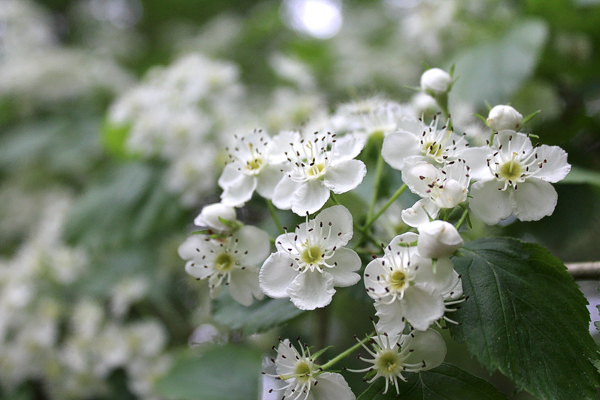
The trees tend to bloom in the spring, sprouting aromatic blossoms that some make out to have a slightly musky smell. In fall the trees bear clusters of bright red berries that have a variety of uses.
Hawthorn berries are proclaimed for their heart health and are often foraged for such purposes. In addition to these medicinal benefits, the tree is also a treasure trove for a variety of birds and butterflies. The dense foliage of the trees provides nest protection and the blossoms supply nectar for hummingbirds and other pollinators.
Once you source your hawthorn trees, you can go about collecting your berries, which emerge in fall and early winter. Berries now in hand, you can go about making your wine!
The process for making hawthorn wine is basically the same as it is for any small-batch wine, with a few alterations.
You’ll mix your hawthorn berries with some sugar and a few other winemaking additives along with a winemaking yeast. Once topped with boiling water, you’ll allow this medley to ferment for a week or two and siphon the mixture to a clean fermentation vessel for a secondary ferment, leaving the fruit and sediment behind.
This mixture will then ferment more slowly, preferably in a cool, dark location, for anywhere from 6 weeks to 6 months.
After some rudimentary tasting to confirm that your wine is sweet enough, you’ll then bottle the wine and let it bottle-age for another few weeks (or months) before savoring. Simple enough!
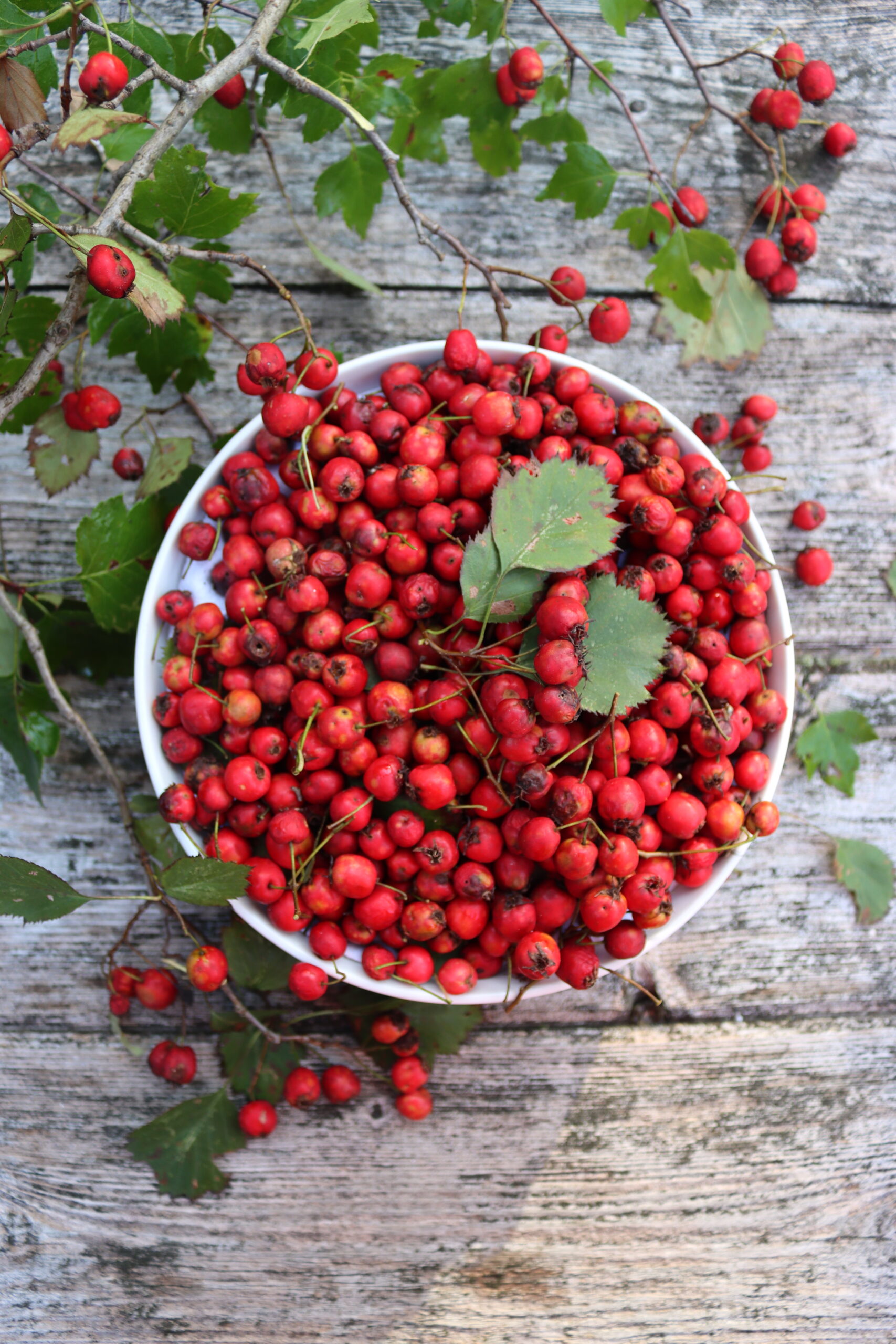
The following recipe is written assuming that you’re already familiar with basic winemaking terms and practices. If you need to brush up on the procedure or are newer to winemaking, these introductory guides will help you:
- Beginners Guide to Making Fruit Wines, in which I’ll guide you through all the steps in the winemaking process.
- How to Make Mead (Honey Wine) is similar, but covers some of the details with using honey.
- Equipment for Winemaking overviews all the equipment you’ll need to make your first batch (besides the ingredients).
- Ingredients for Winemaking outlines all the other things you’ll need (not including yeast).
- Yeast for Winemaking will help you choose the right yeast. There are dozens of yeast strains — be sure you use the right one!
Ingredients for Hawthorn Wine
Making hawthorn wine only requires a few ingredients. For those new to winemaking, feel free to glance over this introductory guide on winemaking ingredients if you’d like to understand what each of these ingredients does in winemaking.
To make a one-gallon batch of hawthorn wine, you will need:
- 4 lbs of hawthorn berries
- 2-½ pounds sugar (either brown or white)
- Water to fill
- Wine yeast
- 1 tsp Yeast Nutrient
- Juice of 1 lemon and 2 oranges (or 2 tsp Acid Blend)
- 1 tsp Pectic Enzyme (optional)
You won’t need a tannin powder for this wine as hawthorn berries already have a good deal of tannins present in them naturally. Additionally, a pectic enzyme can help with clarity, but isn’t vital to the wine. You will need a wine yeast and yeast nutrient, however.
As to fruit, about 4 lbs of hawthorn berries will be needed to produce 1 gallon of hawthorn wine.
As for sugar, 2-½ pounds will yield a good amount of sweetness. You can use either white or brown sugar. White sugar will give your wine a nicer finished color, however, brown sugar will add a richer flavor. (Know that 1 pound of sugar equals about 2 cups, so you’ll need 5 cups for this recipe.)
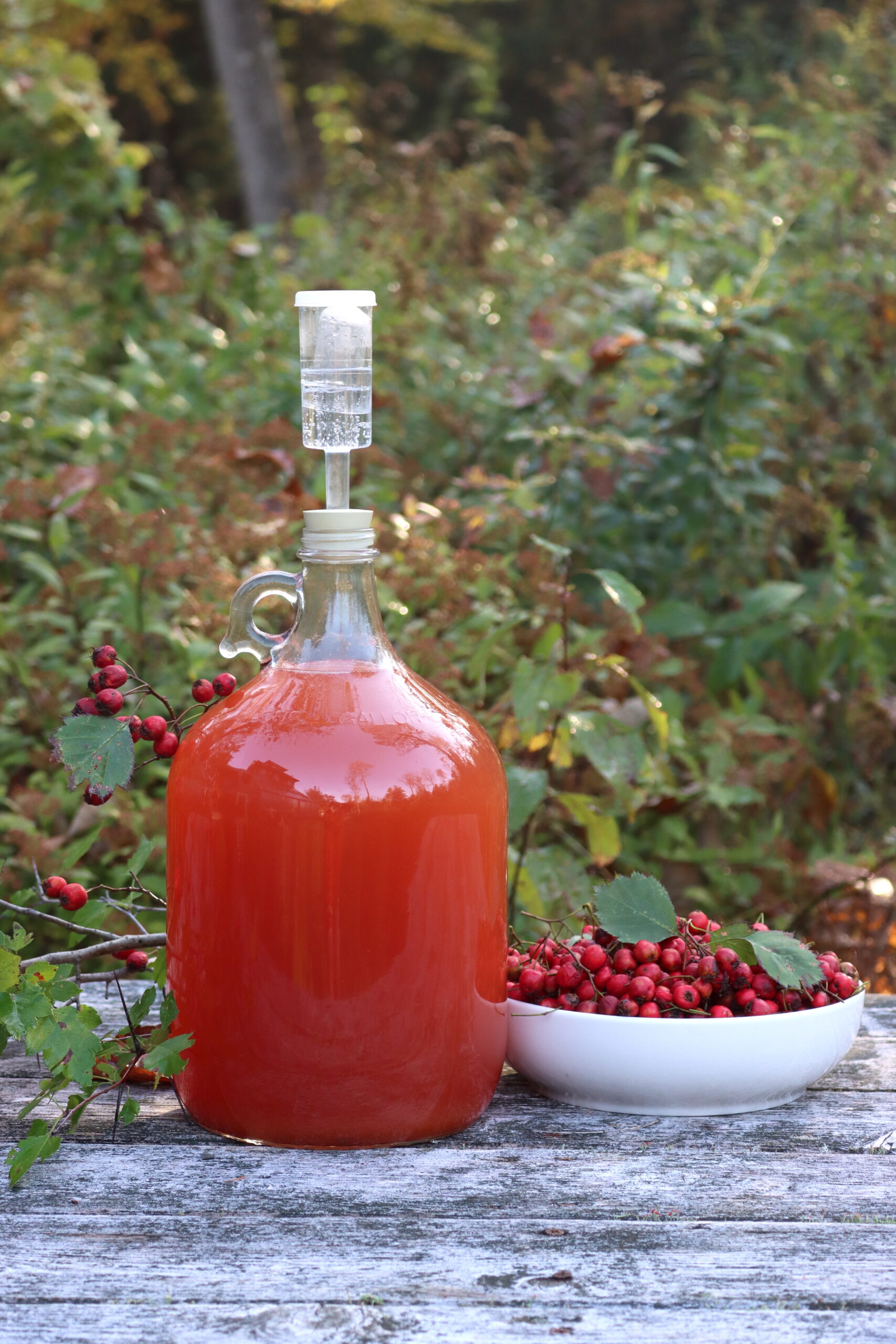
Yeast for Hawthorn Wine
When it comes to yeast, the strain you use can actually contribute a lot to the final flavor. Certain yeast strains will add more fruit flavors, some lend a clean finish, and still others will ferment very dry unless extra sugar is added (like champagne yeast which has a very high alcohol tolerance).
Some good yeast options for hawthorn wine include:
- Lalvin D47
- Lalvin QA23
- Red Star Premier Cuvee or Lalvin EC-1118
Lalvin D47 will add a fruity and floral flavor to your wine, along with an aroma of spice. This yeast is a moderately vigorous fermenter with an alcohol tolerance to 15%.
Lalvin QA23 adds a clean fruity aspect to wines. For this reason, it is often used for white wines. Ferments quickly with an alcohol tolerance to 16%.
Red Star Premier Cuvee or Lalvin EC-1118 are both champagne yeasts. These are strong ferments that boast a neutral flavor. This will result in a dryer wine, as the alcohol tolerance is higher (about 18%).
One packet of wine yeast will be needed for 5 gallons, so you won’t need to use the whole packet. Instead, add somewhere between ⅕ to ½ the packet to your 1 gallon hawthorn mixture (the amount added isn’t strictly vital as yeast are quick to multiply regardless). Generally, 1 tsp is needed per gallon of wine.
Most yeast packets come outfitted with instructions printed right on them, so simply follow these to use them correctly. Different yeasts work differently from one another — there’s liquid yeast, and then there’s dry yeast that needs to be rehydrated before being added to your wine mixture.
As hawthorn berries aren’t highly acidic, you will also need to add either citrus juice or an acid blend to ensure the wine will ferment properly. You can add either a few tablespoons of citrus juice (one lemon and two oranges is a nice combo) or add about 2 teaspoons of an acid blend.
Know that your acid blend is more potent than lemon juice; 1 teaspoon of acid blend is about equivalent to 1 tablespoon of lemon juice. You can also thinly slice the peels of your citrus and add them to your primary ferment for added flavor.
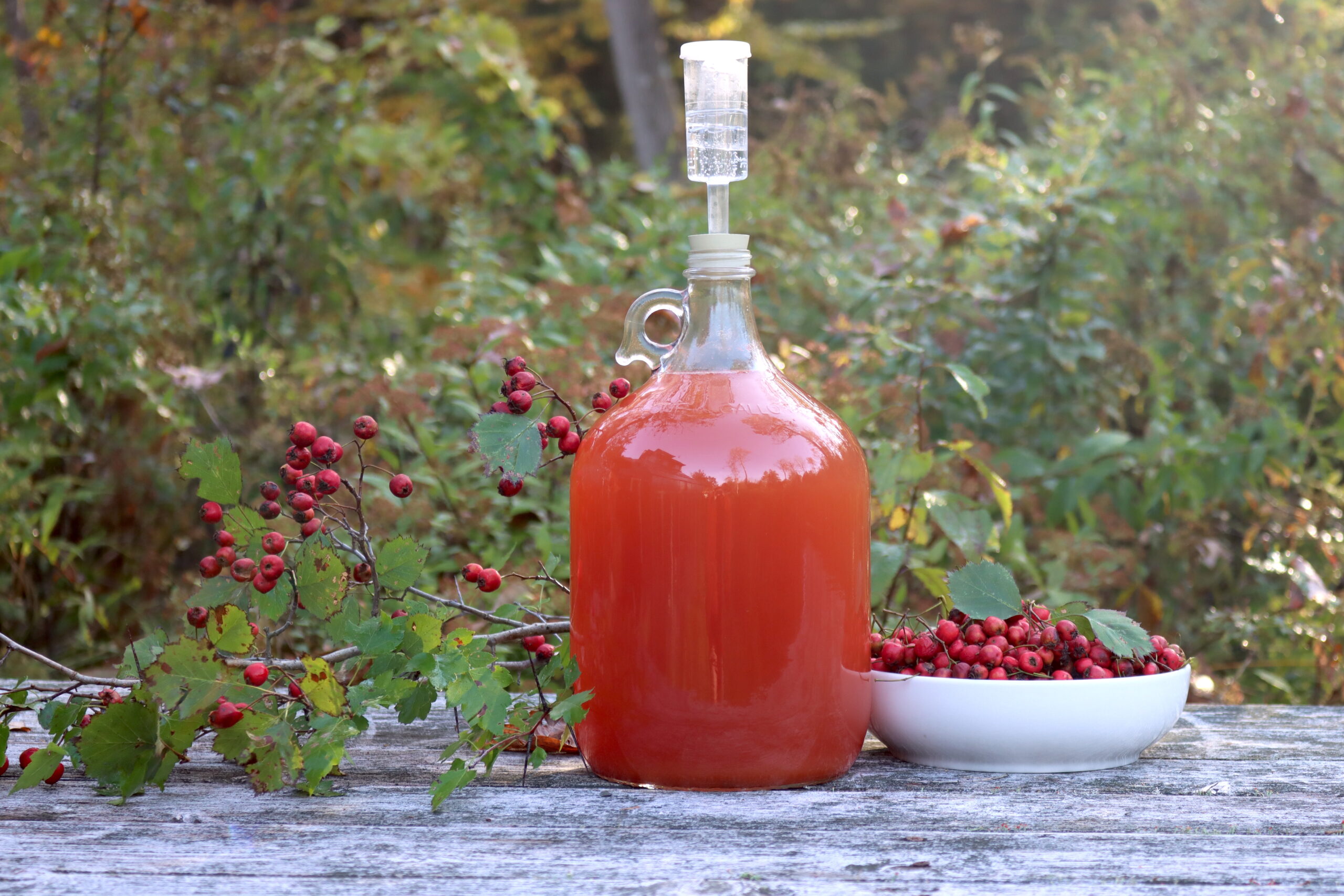
Equipment for Hawthorn Wine
In addition to the recipe ingredients for hawthorn wine, you will also need the following winemaking equipment:
- One Gallon Glass Carboy (often sold as a kit with a rubber stopper and water lock together)
- Rubber Stopper and Water Lock (if not included above)
- Brewing Siphon
- Wine bottles or Flip-top Grolsch bottles
- Bottle Corker and clean, new corks for bottling the wine
- Brewing Sanitizer
Making Hawthorn Wine
Making hawthorn wine is a generally simple procedure. With hawthorn berries, it is recommended to leave the fruit in for the primary ferment. This being so, you’ll want to use a wide-neck carboy instead of a narrow-neck one.
Begin by washing and destemming your berries. Once clean, place the hawthorn berries in a wide-mouth carboy along with all ingredients except the wine yeast and cover with boiling water. Stir to dissolve and allow to sit until cool.
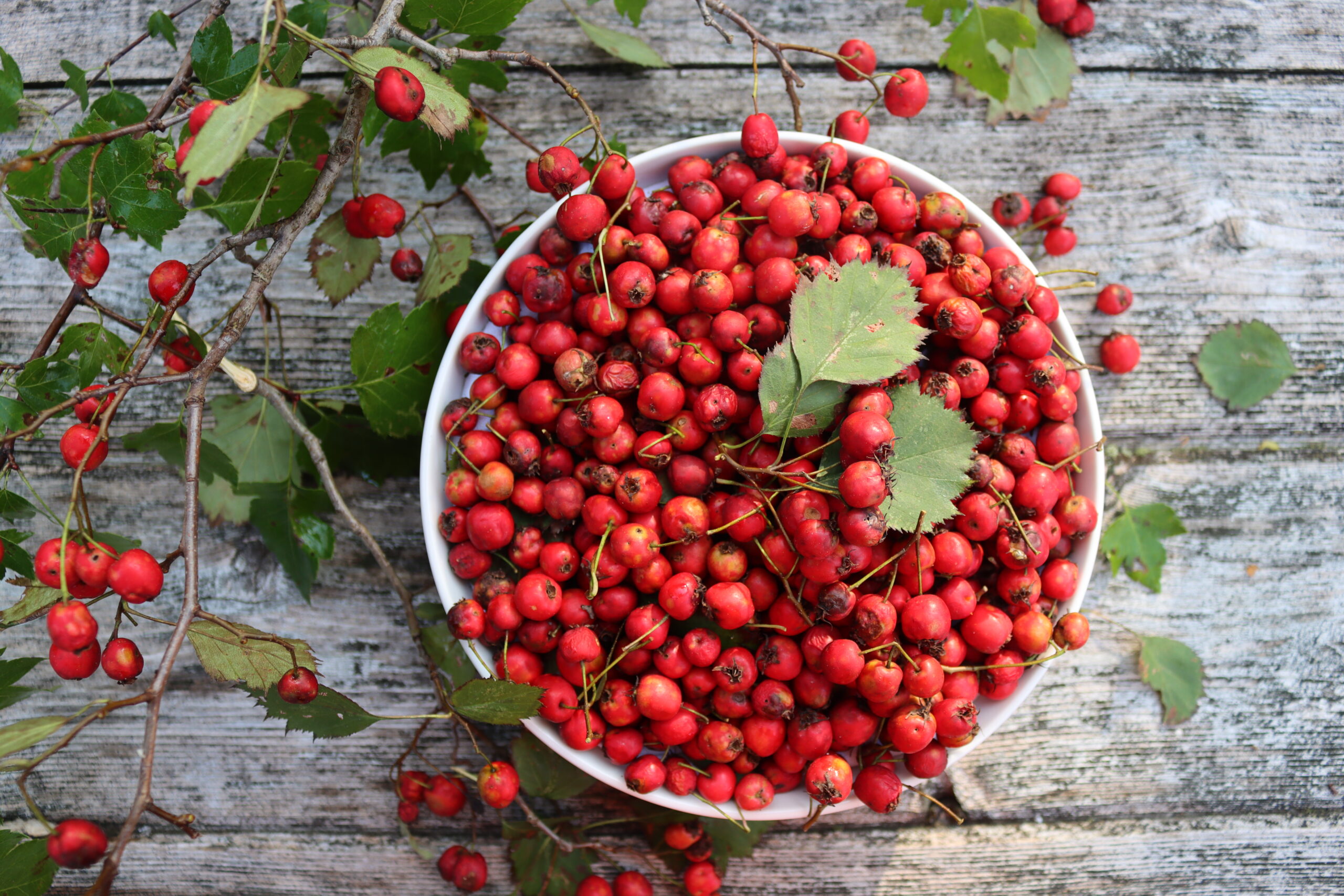
Once cool, you can add the yeast mixture. If using dry yeast, be sure to rehydrate it first by allowing the yeast to “bloom” in a small amount of room temperature water.
After adding the wine yeast, add enough water to leave just 2 to 3 inches of headspace (for the ferment to bubble) and seal with a water lock. (A water-lock is a one-way valve that lets CO2 escape without allowing contaminants in.)
Primary and Secondary Fermentation
In a few days, you should see your wine bubbling. Allow your hawthorn wine to ferment for 10 to 14 days or until the fermentation begins to slow. At this stage, most of the bubbling will have stopped and a good amount of sediment should be visible at the bottom of your fermentation vessel.
Now, it is time to move on to your secondary ferment.
To do so, use a siphon to move your wine to a clean fermentation vessel, leaving the sediment and fruit behind. (Sediment can cause an off-flavor in your finished wine, so try not to stir it up.)
Seal with a water lock and let the mixture ferment for 8 more weeks (2 months). If you’re making mead you may wish to do a secondary ferment for longer — honey takes more time to ferment as it is less digestible than sugar is for yeast. Mead secondary ferments can take between 2 to 6 months.
Bottling and Aging
Once you finish your secondary, sample your wine. At this point, the flavors should be balanced and sweet. If not, move to a clean fermentation vessel and adjust to your taste.
If adding sugar you will need to apply a Campden tablet and ½ teaspoon of potassium sorbate to stop the ferment. Be sure to add these at least 24 hours before adding your sugar to be sure the wine has properly stabilized.
Add sugar by heating equal parts sugar and water in a saucepan to create a simple syrup (½ cup water and ½ cup sugar is a good place to start) and mix into your wine before putting it back into ferment for about 1 to 2 weeks before bottling.
Once suited to your tastes, you can bottle your hawthorn wine! After bottling, allow your wine to bottle-age for another month or so before drinking. Remember, wine improves with age, so if you can wait longer than a month, things will only get better!
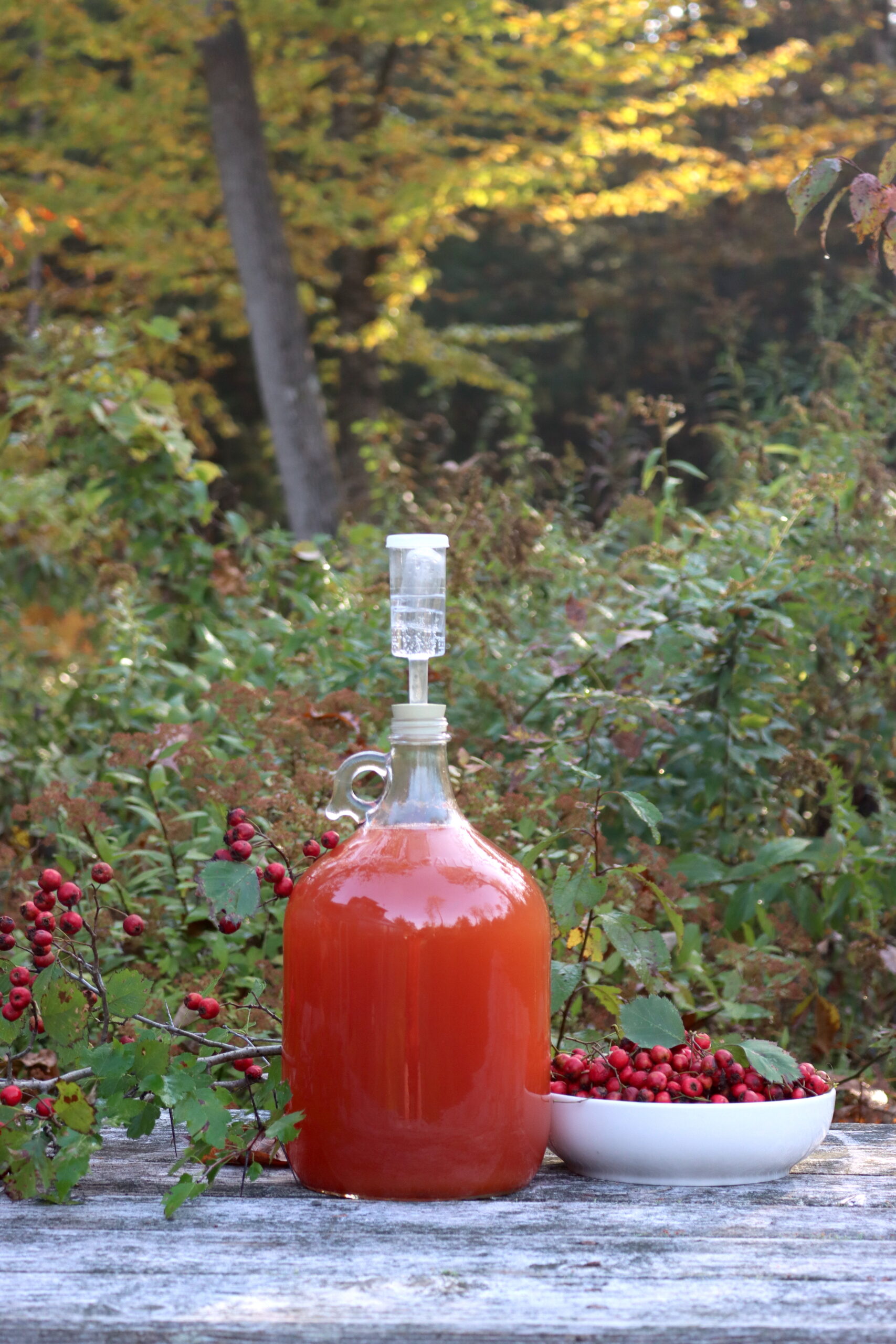
Ways to Preserve Hawthorn
Looking for more ways to preserve hawthorn berries and hawthorn flowers?
- Homemade Hawthorn Jelly
- 50+ Fruit Canning Recipes from A to Z
- 30+ Medicinal Flowers (& How to Use Them)
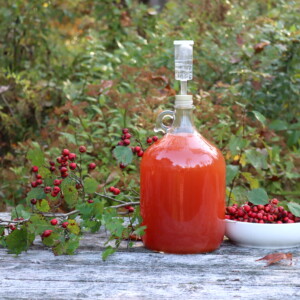
Hawthorn Wine
Equipment
Ingredients
- 4 lbs hawthorn berries
- 2-½ lbs sugar
- Water, to fill
- 1 tsp yeast nutrient
- 1 medium Lemon, Juiced
- 2 medium Oranges, Juiced
- 1 tsp Pectic Enzyme, Optional, helps clarify the wine, but not strictly necessary
- wine yeast, see note
- Campden Tablet and Potassium Sorbate for Stabilizing, Optional, I do not use these
Instructions
- In a wide-mouth carboy, combine all ingredients except yeast.
- Pour boiling water over ingredients and stir to incorporate.
- Let mixture cool.
- Once cool, add yeast. (For dry yeast, be sure to rehydrate first in a small amount of room temperature water for 5 to 10 minutes.) Your wine should begin to bubble now.
- Top with enough water to allow 2 to 3 inches of headspace in your carboy, cover with a wide-mouth water lock and let the mixture ferment for 10 to 14 days.
- After the primary ferment is complete, siphon the mixture into a new fermentation vessel, leaving the fruit and sediment behind.
- Ferment in secondary for 2 months.
- After secondary fermentation is complete, taste the wine and adjust as necessary (see notes). If more sugar is added, allow to ferment another 1 to 2 weeks before bottling.
- Bottle wine by siphoning it into clean bottles and sealing with corks.
- Let the hawthorn wine age for at least 2 weeks before drinking. Aging for 2 months or longer is preferable. Fruit wines will mellow with time and improve in flavor.
Notes
Amount of Fruit
Four pounds of hawthorn berries is the recommended amount for making 1 gallon of hawthorn wine. However, if your berries are sparse, you can use a little less.Yeast
For hawthorn wine, choose a wine yeast with moderate alcohol tolerance that either ferments clean or adds some light fruit flavor. Good yeast choices include Lalvin D47, Lalvin QA23, and Red Star Premier Cuvee or Lalvin EC-1118.Acid Source
In place of lemon and orange juice, you can use 1 tsp of Acid Blend for a cleaner flavor.Stabilizing and Back Sweetening
If your wine tastes too dry at the end of secondary, you can backsweeten it. To backsweeten, move the wine to a clean container (so you don’t stir up any sediment) and add 1 Campden tablet and ½ teaspoon potassium sorbate to stabilize the wine. (If the wine isn’t stabilized before adding sugar, the wine will rapidly ferment and bottles may burst.) Once the wine is stabilized, add sugar to your taste. This should be done by making a simple syrup by dissolving equal parts sugar and water in a saucepan and adding to the wine before bottling. For a general amount, I’d suggest starting with ½ cup sugar per gallon of hawthorn wine. See notes within the article regarding stabilizing and back sweetening.Nutrition
Nutrition information is automatically calculated, so should only be used as an approximation.
Autumn Winemaking Recipes
There are winemaking recipes for just about every fruit out there, as well as a few for veggies and flowers. Try your hand at these recipes as well!
- Apple Wine
- Cranberry Wine
- Elderberry Wine
- Persimmon Wine
- Pomegranate Wine
- Beetroot Wine
- Parsnip Wine
